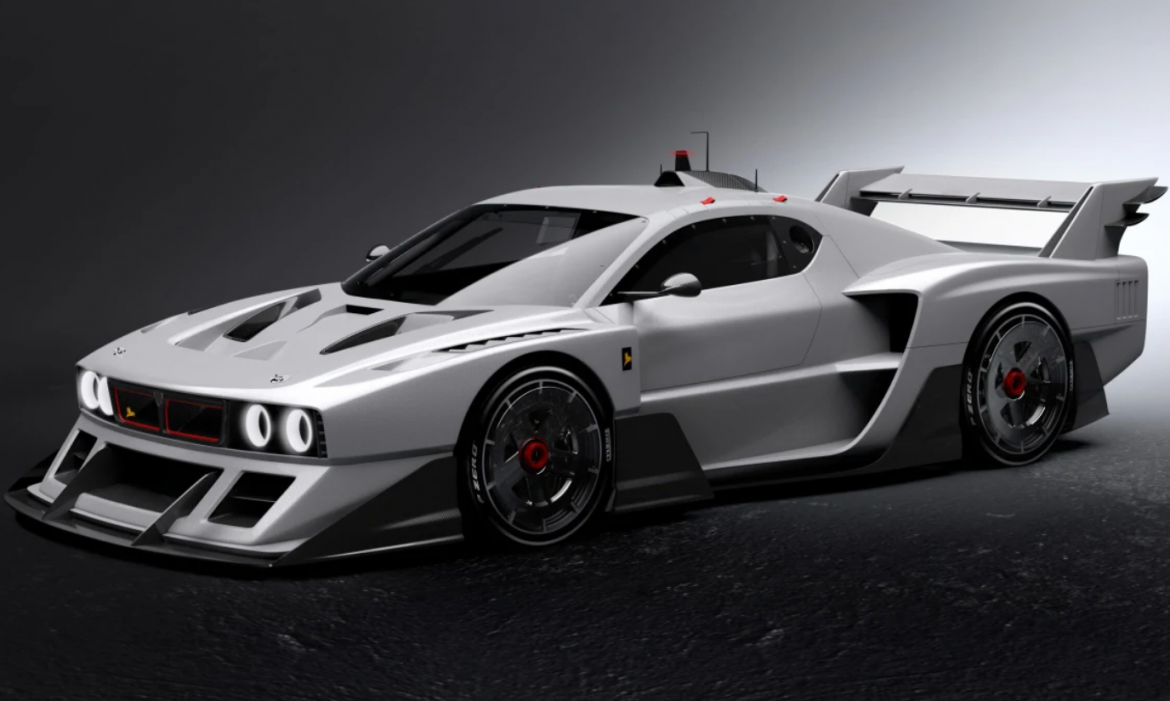Italian boutique automaker Kimera has unveiled its latest creation, the K39 – a purpose-built hill climb car with its sights set on conquering the legendary Pikes Peak International Hill Climb. What sets this announcement apart is not just the car’s striking design, but Kimera’s audacious goal: to surpass the all-time record at Pikes Peak, currently held by an electric vehicle.
The K39 represents a significant departure from Kimera’s previous offerings, the EVO37 and EVO38, which were based on the Lancia Beta Montecarlo chassis. For this new challenger, Kimera has opted for a full carbon monocoque chassis, signalling their commitment to pushing the boundaries of performance and lightweight construction.
While details about the K39’s powertrain remain shrouded in secrecy, it’s clear that Kimera is aiming for extraordinary performance. The company’s previous models featured a combination of turbocharging and supercharging on a 2.2-litre four-cylinder engine, with the all-wheel-drive EVO38 producing around 600 horsepower. However, given the ambitious nature of the Pikes Peak challenge, industry insiders speculate that the K39 will boast significantly more power.
The current all-time record at Pikes Peak stands at an astonishing 7 minutes and 57.148 seconds, set by Romain Dumas in the all-electric Volkswagen ID.R in 2018. This presents a formidable challenge for Kimera, as they’re not merely aiming to beat the internal combustion engine record of 8:13.878 (set by Sebastien Loeb in the Peugeot 208 T16 in 2013), but to outperform an electric vehicle that doesn’t suffer from power loss due to the thinning air at high altitudes.
To put the magnitude of this challenge into perspective, only a handful of internal combustion vehicles have managed to complete the Pikes Peak climb in under nine minutes. The thin air at the summit, which reaches an altitude of 14,115 feet (4,302 metres), significantly reduces the power output of traditional engines, giving electric vehicles a natural advantage.
Kimera acknowledges this challenge, noting that electric race cars “are not penalised by the thin air that becomes increasingly oxygen-poor as you climb to the summit” of Pikes Peak. This recognition suggests that the company has some innovative solutions up its sleeve to overcome this inherent disadvantage.
Speculation is rife about the potential powertrain of the K39. Given that Loeb’s record-setting Peugeot boasted around 875 horsepower from a twin-turbo V6, and the Norma M20 SF PKP, another sub-nine-minute performer, produced about 800 horsepower, it’s likely that the K39 will need to surpass these figures to have a shot at the overall record. Keen observers have noted a change in the exhaust configuration from Kimera’s previous models, hinting at possible powertrain innovations.
The K39’s assault on Pikes Peak is scheduled for 2025, giving Kimera ample time to refine and test their creation. If successful, this feat would not only shatter the existing ICE record but also represent a David versus Goliath victory against the might of major automotive manufacturers and their electric powertrains.
Beyond the racetrack, Kimera has announced plans to produce a limited number of road-going versions of the K39. This move aligns with the company’s strategy of creating exclusive, high-performance vehicles inspired by motorsport achievements.



